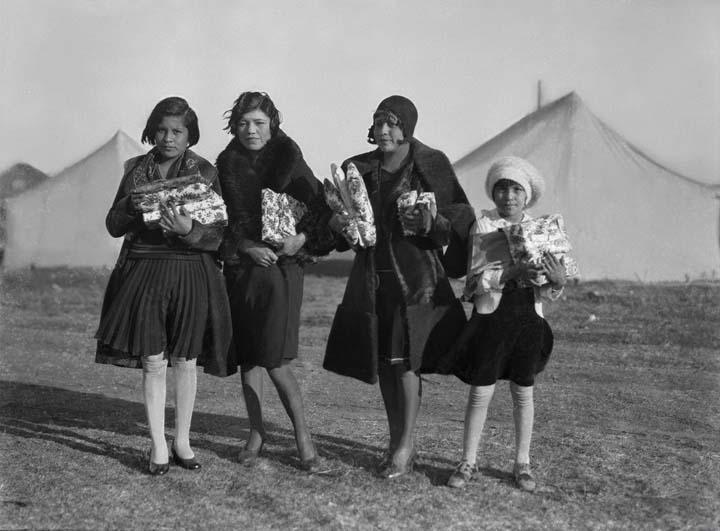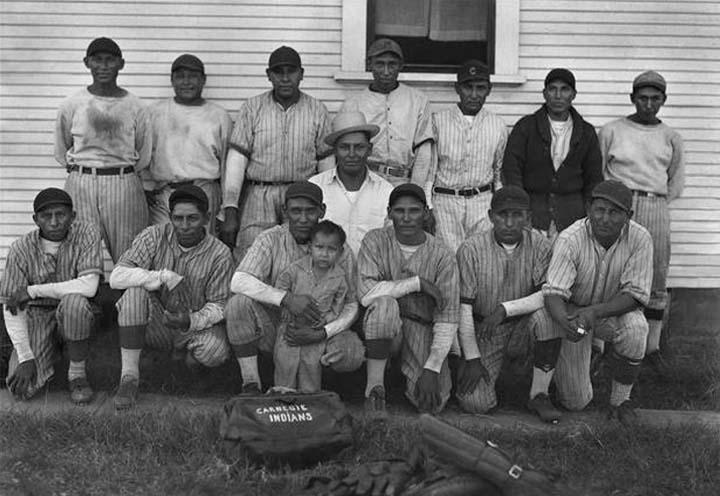Archive Fever: Horace Poolaw
Horace Poolaw, of the Kiowa tribe, took thousands of photos of his multitribal community around Anadarko, Oklahoma, between the 1920s and 1950s. A selection of his images appears in a new volume, For a Love of His People: The Photography of Horace Poolaw (Yale 2014), which accompanies the National Museum of the American Indian’s exhibition of the same name, which opens next week. Info
Spanning some 50 years of life on the Southern Plains of Oklahoma (1920s-1960s), Poolaw's photographs reveal the warmth of local family and community during a time of tumultuous change. Holland Cotter wrote in the New York Times, “Mr. Poolaw was born in a close-knit Kiowa community in rural Oklahoma on the cusp of major changes in both Native and American life. Terrible things had happened. The Wounded Knee massacre was in the recent past when Mr. Poolaw was young. Chiricahua Apaches were still held as prisoners of war at Fort Sill in Oklahoma. The United States government had sliced up reservations in an effort to break down tribal cohesiveness and force Indians to assimilate into mainstream American society, which had stresses of its own with a changing economy, waves of immigration and European war not far in the future.
"Assimilation was happening, though not necessarily as the government planned. It was taking place on Native American schedules and terms. Mr. Poolaw’s father was a United States Army scout at Fort Sill, but he also assumed the roles of medicine man and tribal historian for the Kiowa. The merging of worlds, at a grass-roots level, became the coincidental subject of Mr. Poolaw’s photographs….
“It’s been said that America itself will never be at rest, socially or spiritually, until it has fully acknowledged and begun to repair the damage done to its first people, including damage inflicted through image-making. But Mr. Poolaw’s work, and the work of the artistswho have succeeded him, clearly show that Native Americans are not waiting around for that. They’re shaping their own restorative images of both Native and American, doing for America what America cannot, or will not, do for itself.” [more]

For Strong Hearts, Pulitzer Prize-winning author N. Scott Momaday (Kiowa) and a relative of the photographer wrote a brief piece on the photographer, extracted here:
Horace Poolaw (1906-1984) was the son of Tsomah, my treat-grandmother’s sister, and Pohd-lok (pronounced “Pole-haw”), later Poolaw. Pohd-lok (“Old Wolf” in Kiowa) became known to the non-Indian community as “Kiowa George>” He was a wonderful man, an arrow-maker, the keeper of a calendar. He lived at that crucial time of change when the Plains culture was brought down and the Kiowa, along with other tribes, had to enter upon another, harder plane of existence. It was a brutal transition, an accommodation most difficult, final, and unforgiving….
Horace Poolaw was a photographer of the first rank. He knew, from the time he took up a camera in his hands, how to draw with light…. His vision of his world, perceived through the lens of a camera, was touched with genius. Looking at his life’s work, we see that he was the equal of such frontier photographers as Edward S. Curtis, Charles Lummis, and William Soule; and in his native intelligence and understanding of the indigenous world, he surpassed them, He was an artist of exceptional range and accomplishment, and he has given us a unique vision of American life. [about]
Photographs, top to bottom, © 2014 Estate of Horace Poolaw: Evelyn Saunkeah, Lucy Apheatone, Nell Saunkeah, Vivian Saunkeah, Mountain View, Oklahoma, ca. 1930; Carnegie Indians Baseball Team, Carnegie, Oklahoma, ca. 1933; Jerry Poolaw, Anadarko, Oklahoma, ca. 1944. These photographs appeared in Strong Hearts: Native American Visions & Voices.




